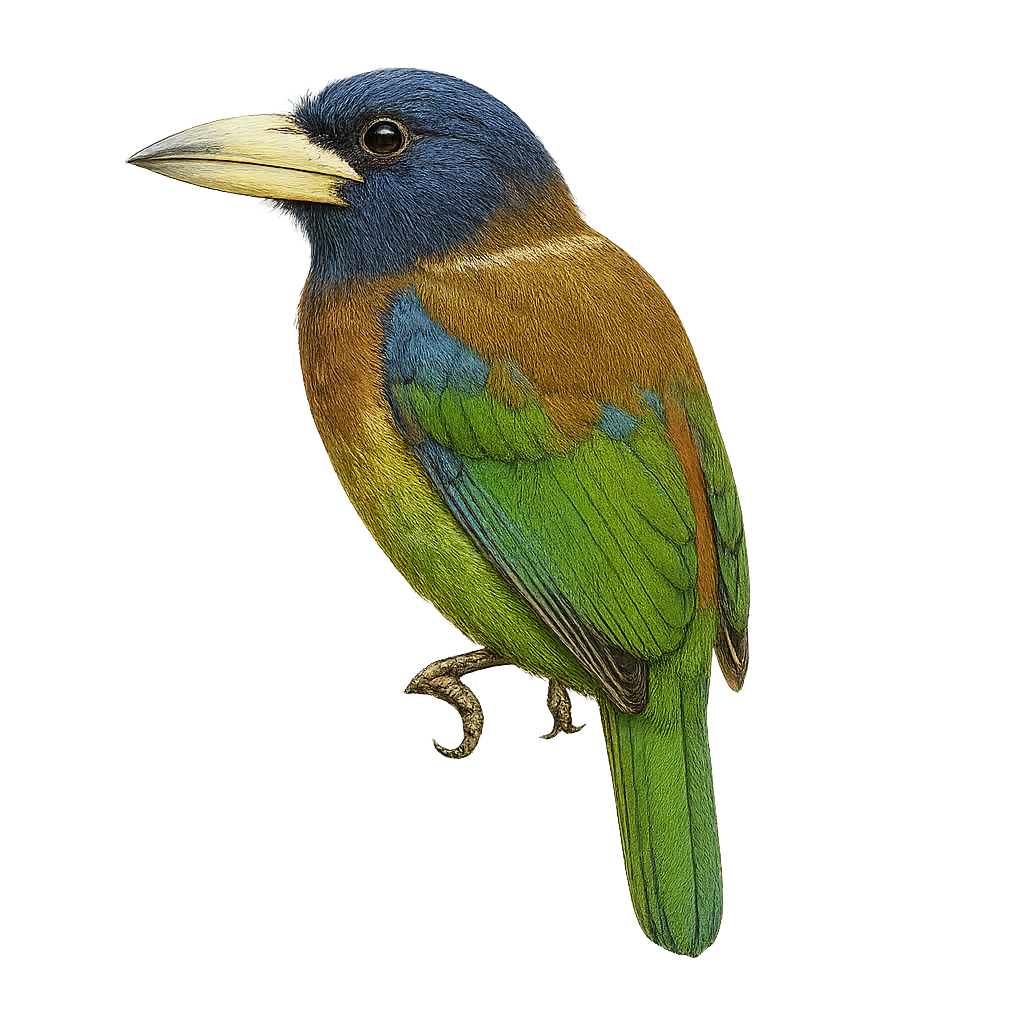Your wildlife photography guide.
Explore the great barbet in detail, study its behavior, prepare your shots.
Where to observe and photograph the great barbet in the wild
Learn where and when to spot the great barbet in the wild, how to identify the species based on distinctive features, and what natural environments it inhabits. The WildlifePhotographer app offers tailored photography tips that reflect the great barbet’s behavior, helping you capture better wildlife images. Explore the full species profile for key information including description, habitat, active periods, and approach techniques.
Great Barbet
Scientific name: Psilopogon virens

IUCN Status: Least concern
Family: MEGALAIMIDAE
Group: Birds
Sensitivity to human approach: Suspicious
Minimum approach distance: 10 m
Courtship display: March to June
Incubation: 13-15 jours
Hatchings: March to July
Habitat:
Tropical forests, subtropical forests, mountainous regions
Activity period :
Primarily active during the day, with peak activity in the morning and late afternoon.
Identification and description:
The Great Barbet, or Megalaima virens, is a colorful bird from the Megalaimidae family. It is primarily found in the tropical and subtropical forests of South and Southeast Asia, particularly in the mountainous regions of the Himalayas. This bird is distinguished by its bright green plumage, blue head, and red throat. It measures about 30 cm in length and has a robust beak adapted to its diet, which mainly consists of fruits but also includes insects. The Great Barbet is a diurnal bird, often seen alone or in small groups. It is known for its loud and repetitive call that echoes through the canopy. Although its habitat is threatened by deforestation, it is currently classified as of least concern by the IUCN.
Recommended lens:
400 mm – adjust based on distance, desired framing (portrait or habitat), and approach conditions.
Photography tips:
To photograph the Great Barbet, focus on tropical and subtropical forests where it is most commonly seen. Use a telephoto lens of 400mm or more to capture detailed images without disturbing the bird. Be patient and discreet, as this bird can be suspicious. Listen for its distinctive call to locate its position. The best times for photography are early morning or late afternoon when the light is soft and the bird is active.
The WildlifePhotographer App is coming soon!
Be the first to explore the best nature spots, track rutting seasons, log your observations, and observe more wildlife.
Already 1 449 wildlife lovers subscribed worldwide

